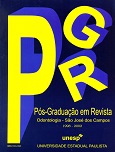Influência de ciclos de polimerização sobre a rugosidade e porosidade de resinas acrílicas
DOI:
https://doi.org/10.14295/bds.2001.v4i2.120Abstract
O trabalho avaliou a influência de ciclos de polimerização sobre rugosidade e porosidade de superfície das resinas acrílicas Clássico e Onda-Cryl. Os padrões em cera, medindo 65x10x3 mm, foram incluídos em muflas metálicas e de fibra de vidro. A proporção pó/líquido, manipulação e prensagem das resinas acrílicas foram realizadas de acordo com as instruções dos fabricantes. Após polimerização nos ciclos água aquecida a 74oC por 9 horas, água em ebulição por 20 minutos e energia por microondas, os corpos-de-prova foram removidos das muflas após esfriamento em temperatura ambiente e submetidos aos processos de acabamento e polimento convencionais. Em seguida foram submetidos à análise de porosidade em lupa estereoscópica Carl Zeiss e ao teste de rugosidade de superfície no aparelho Surfcorder SE 1700. Os resultados submetidos à análise de variância e ao teste deTukey (5%) mostraram que a maior rugosidade de superfície foi verificada na resina Clássico quando comparada com a Onda-Cryl, ambas polimerizadas no microondas, com valores com diferença estatística significativa. Os demais ciclos não mostraram diferença estatística significativa entre as resinas. Não houve diferença estatística significativa entre as resinas quando polimerizadas pelos ciclos convencional, rápido e por microondas.
Downloads
Downloads
Published
How to Cite
Issue
Section
License
Brazilian Dental Science uses the Creative Commons (CC-BY 4.0) license, thus preserving the integrity of articles in an open access environment. The journal allows the author to retain publishing rights without restrictions.
=================




























